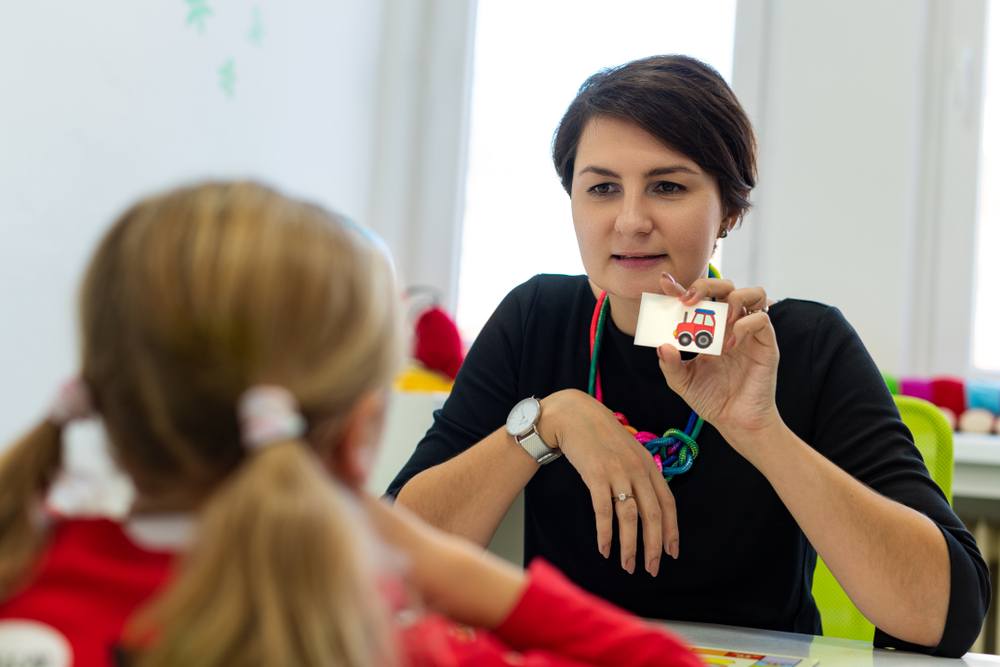Overview

ABA is a therapy based on the science of learning and behavior. It involves teaching strategy that breaks down the skills into component steps and teaching each step intensively until mastered. It increases language, communication, and social skills. It helps in Self-care, Play and leisure, Motor skills, Learning and academic skills. The goal is to increase behaviors that are helpful and decrease behaviors that are harmful or affect learning.Teaches skills that are useful in everyday life. Can involve one-to-one teaching in a structured environment or group instruction. It is a flexible program, adaptive to the amendments for the needs of each child.
What does ABA stand for?
Applied- Means, those behaviors are targeted to teach the child which are socially important for the child.
Behavior- The Behavior targeted must change.
Analysis- Progress is measured throughout and behavior and is monitored.
What is the theory behind it?
- Researchers have shown that children with autism/developmental delays are less likely than their typically developing peers to spontaneously learn skills from other children and adults in their everyday environments without specific instruction.
- Using an ABA approach can help children with autism lead more independent and socially active lives.
Effectiveness of ABA Therapy: It is proved to be an evidenced based best practice treatment. It helps in:
- Language Acquisition
- Peer interaction and social skills
- Academic and cognitive skills
- Following typical classroom routines
- Responding to group instructions
- Self-help skills and daily living skills
- Reducing inappropriate behavior
WHO CAN PROVIDE APPLIED BEHAVIOR ANALYSIS THERAPY?
- Applied Behavior Analysis (ABA) therapy is typically provided by Board Certified Behavior Analysts (BCBAs), Board Certified Assistant Behavior Analysts (BCaBAs), Registered Behavior Technicians (RBTs), and paraprofessionals.
- A BCBA is a person who has met the educational and professional training requirements established by the Behavior Analysis Certification Board. A BCBA will typically hold a Master’s degree in Psychology, Child Development, or a related field. The primary duties of BCBAs include: conducting clinical assessments, establishing skill based and behavior goals, updating and modifying treatment goals, conducting parent and caregiver trainings, supervising Registered Behavior Technicians and BCaBAs, ensuring the ABA program is implemented correctly and effectively, and writing progress reports required by funding sources.
- Academic and cognitive skills
- Following typical classroom routines
- Responding to group instructions
- Self-help skills and daily living skills
- Reducing inappropriate behavior
THE ROLE OF THE ASSISTANT BEHAVIOR ANALYST
A BCaBA (assistant Behavior Analyst) works under the supervision and direction of a BCBA and has similar duties as a BCBA. A BCaBA is also certified by the Behavior Analysis Certification Board and has met the necessary training and education requirements. A BCaBA will typically hold a Bachelor’s degree in the field of Psychology, Child Development, or related field.
THE ROLE OF THE REGISTERED BEHAVIOR TECHNICIAN
As stated by the Behavior Analysis Certification Board, an RBT is a person who practices under the close, ongoing supervision of a BCBA, BCaBA, or BCBA-D. The Registered Behavior Technician is primarily responsible for the direct implementation of ABA services. This is the person who is typically working 1:1 with an individual in designated treatment settings (home, school, clinic, etc.)
